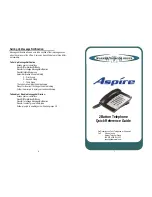For example, the device contains a laser that can be damaged during disassembly which might expose you to
hazardous laser emissions which are not visible.
Contact customer service if it isn’t working properly or has been damaged. For more information, visit
g.co/pixel/contact.
Charging
Be sure the power adapter and phone are well ventilated when in use or charging. Using damaged cables or
power adapters, or charging when moisture is present, can cause fire, electric shock, injury, or damage to the
phone or other property. Do not charge your phone when it’s wet. Avoid charging your device in direct
sunlight.
When charging the device, make sure the power adapter is plugged into a power outlet near the device and is
easily accessible. Do not force this power adapter and other plugs or power adapters to a power outlet if space is
not sufficient to accommodate both. When disconnecting the power adapter from a power outlet, pull on the
adapter, never on the charging cable. Do not twist or pinch the cable, and do not force a connector into a port. If
you receive a message while charging that instructs you to unplug the charging device or power adapter,
disconnect the charging device or power adapter. Before attempting to charge again, make sure both the
charging cable connector and the phone's charging port are dry and clear of any objects.
Only charge your phone with the included cable or compatible charging accessories, which are available on the
Google Store or at Google authorized resellers (look for Google’s “made for” badge). The AC adapter must be
certified with a Limited Power Source output per IEC 60950-1 and/or classified PS2 per IEC 62368-1, rated: 5
Volts DC, maximum 3 Amp; 9 Volts DC, maximum 3 Amp when used with USB PD enabled AC adapter, and
up to 11 Volts DC, maximum 3 Amp for USB PD 3.0 PPS enabled AC adapter and qualified per CTIA
Certification Requirements for Battery System Compliance to IEEE 1725. Failure to use compatible charging
accessories can cause fire, electric shock, injury, or damage to the device and the accessories.
Wireless charging
Your phone may be charged with a Qi-compatible or Google-approved wireless charger. Do not place other
metallic or magnetic objects between the wireless charger and your phone, as this could cause heating of the
other object or cause your device not to charge properly. Examples of such objects include coins, jewelry, SIM
tray tools and credit cards. If using a phone case that is metallic or magnetic, remove the case prior to wireless
charging as this may cause the device or charger to overheat or cause the device not to charge properly.
When using Battery Share, this equipment should be operated with a minimum distance of 20 cm between the
device and your body.
Prolonged heat exposure
The phone and its charger generate heat during normal operation and comply with applicable surface
temperature standards and limits. Avoid prolonged skin contact when the device is in use or charging because
exposing skin to hot surfaces for a long period of time may cause discomfort or burns. Do not sleep on or with
your device or its power adapter, or cover them with a blanket or pillow. Be aware of this issue if you have a
physical condition that affects your ability to detect heat against your skin.


















